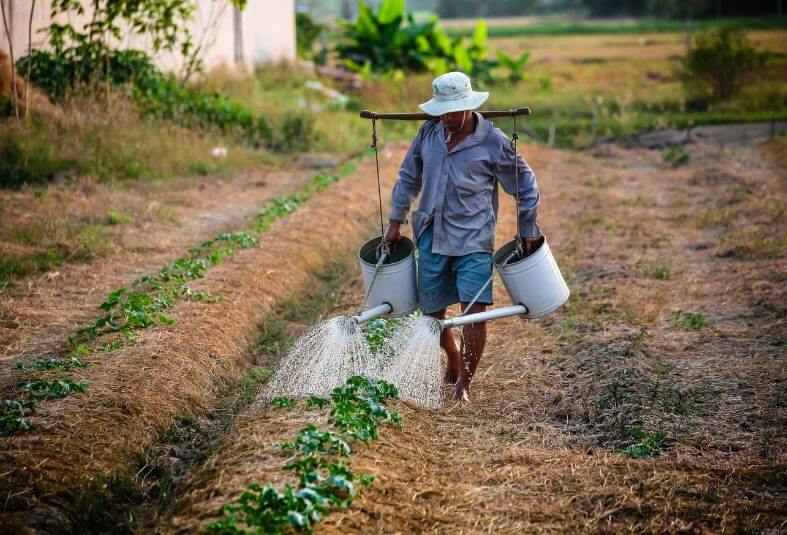Table of Contents
Understanding your carbon footprint
Before looking at what carbon credits are and how you can earn them, you should understand the size of your own carbon footprint. There are experts that can review your farm and farming practices to let you know how much pollution you are creating.
What are carbon credits?
A carbon credit is a tradable unit that recognises the amount of carbon taken out of the atmosphere by using one of the acceptable methods approved by the government. You can usually earn carbon credits through projects that aim to improve your carbon footprint. Since businesses are rewarded for these projects, it encourages them to think more green. 1
How do you earn carbon credits?
Around the world, governments limit how much pollution businesses can make every year by giving them carbon credits. One carbon credit allows a company to produce one tonne of pollution per year. Cleaner companies can sell the carbon credits they don’t use to companies that pollute too much. 2
If a company doesn’t have enough carbon credits, then they’ll have to pay a hefty fine to the government. Over time, fewer credits are issued by governments, making it more expensive to pollute and rewarding companies that produce less pollution or ones that figure out ways to get rid of it. This system results in less total pollution being made every year. 2
How farmers can benefit – Emissions Reduction Fund
The Emissions Reduction Fund (ERF) also known as Climate Solutions Fund (CSF) is a fund created by the Federal Government to support emissions reduction projects in Australia and to drive the Government’s aim to reduce greenhouse gas emissions by 43% below 2005 levels by 2030, which is a 15 percentage point increase on Australia’s previous 2030 target (currently under review by the Labor Government). 3 Farmers and landholders, in particular, are seeing the benefits from their Emissions Reduction Fund (ERF) projects.
You can run an ERF project that will earn you carbon credits for emissions avoidance or storage of carbon dioxide in vegetation and soil.
Here are the four key steps involved in the ERF:
- Find a project that suits you (ensure you meet the eligibility criteria and project requirements)
- Register your project
- Run project and claim your carbon credits, and
- Auction or sell your carbon credits. 4
What’s Carbon Farming?
Carbon Farming is the process of changing agricultural processes or land use to reduce Greenhouse Gas (GHG) emissions or to catch and hold carbon in vegetation and soils. 5
If you want to grow your income or reduce your carbon footprint, there are ways that you can participate and as a farmer, you may already be thinking about these types of projects but unaware of the financial benefits.
It’s important that you speak to your financial advisor before starting your project.
The Soil Carbon Method
A project you already may be thinking about is improving the soil’s carbon levels. If this is a project you’re interested in, speak to your accountant before you start.
The soil carbon method applies to:
- Soil carbon sequestration projects (drawing down carbon from the atmosphere and storing it in soil and vegetation).
- Most Agricultural Systems including cropping, pasture, horticulture and mixed enterprises.
- Relies upon direct measurement of soil carbon to calculate sequestration (rather than a modelled approach).
Some eligible activities to improve soil carbon are:
- Converting from cropland to permanent pasture
- Changing pasture species composition
- Changing grazing patterns
- Water ponding activities – where water effect is ‘spread’ over a wider area, effectively increasing effective rainfall and carbon
- Pasture cropping
- Application of synthetic fertilisers
- Application of non-synthetic fertilisers (timing requirements around these applications)
- Clay spreading and clay delving
- Other ‘innovative’ activities that aim to improve carbon stocks
- New irrigation, and
- Compost application. 6
Seek expert advice
Before starting your project or applying, make sure you speak to your accountant to discuss the possible financial burden. Your accountant can help you identify what strategy is best for your business and what methods are the most cost-effective.
Receive other benefits by working with Carbon. We can connect you with experts that help you with soil sampling and other methods for measuring carbon levels. Since this is a complicated process, having an advisor with these connections and knowledge of the industry, is vital. Get in touch with our team today.





















